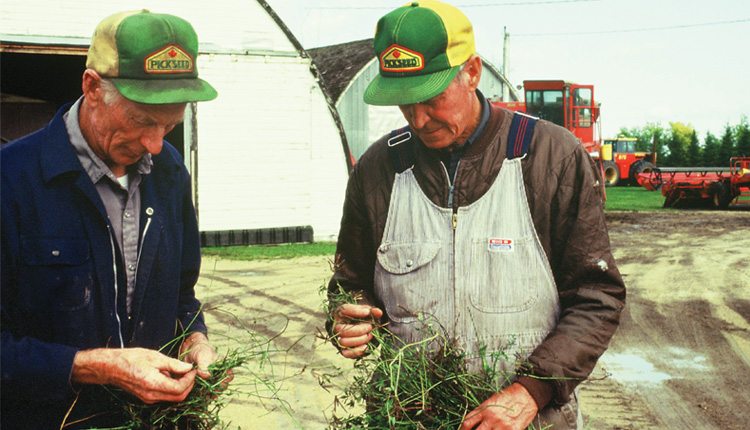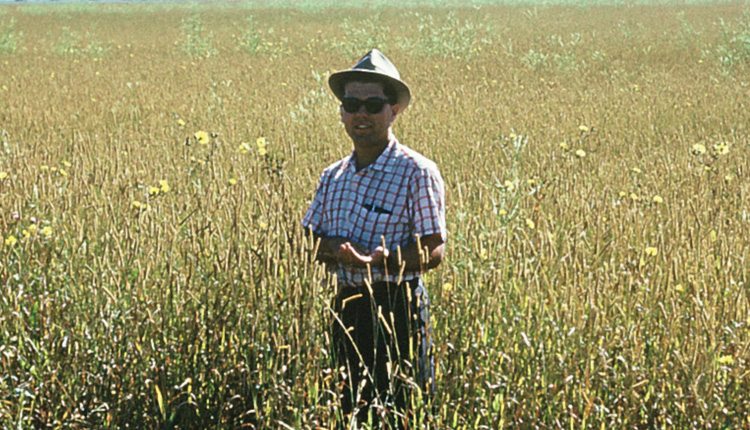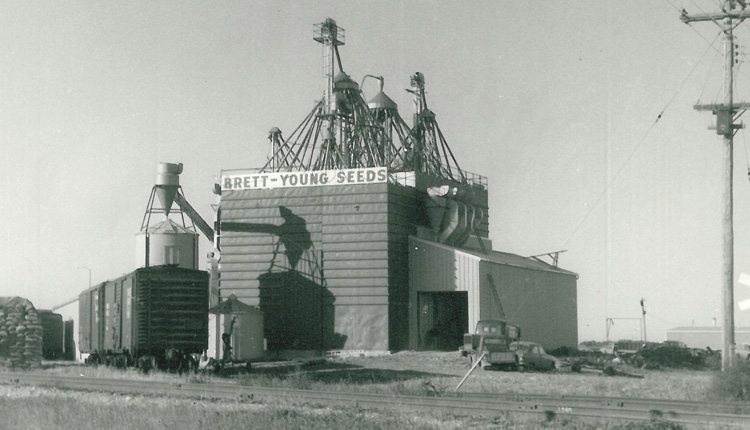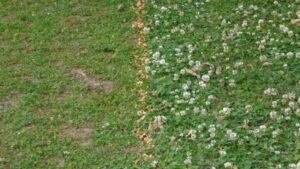It entered into Canada with the earliest of settlers, was carefully tended and saved, and it was the preface of the seed trade. While It has experienced many changes, the forage seed trade is still a thriving and vital part of Canadian agriculture.
_x000D_
One of the most important things that Canada’s early settlers brought with them was seed. Early immigrants cleared patches of land and planted vegetable and forage seeds that they brought with them from Scotland, Ireland, England, France and Germany. Some of the plants didn’t survive Canada’s climate, but seed was carefully collected from those that did and saved to plant the next year’s crop._x000D_
_x000D_
According to the Canadian Seed Trade Association’s 75th Anniversary book, The Merchants of Seed, forage seeds were a crucial part of the settlers’ livelihood, first to ensure that they could feed their livestock and later, as stocks built up, a source of income. General stores got involved, buying surplus seed and selling to those in need._x000D_
_x000D_
As the population grew, so did demand. Some general store merchants began to specialize in seed. By the end of the 19th century, there were a number of seed merchants operating in Ontario and Quebec, buying locally grown seed and in some cases importing from other parts of the world._x000D_
_x000D_
_x000D_
Ontario Leads the Way_x000D_
_x000D_
Ontario was the early leader in forage seed. Martin Pick, former vice-chairman of the Pickseed Group of Companies, speaks of his early days working with his father Otto, and his brother Tom. “Back in those days forage seed was the backbone of Ontario agriculture,” he says. “Corn was only on the fringes.” Red clover, timothy, and particularly alsike clover, became important crops. Early merchants competing both for seed supply and sales included Rennies, Steele Brigs, United Co-op of Ontario, A.E. McKenzie Company, Hogg & Lytle Seeds and others._x000D_
_x000D_
In a November, 1963 speech, Stewert Chidley of Hogg & Lytle Seeds reflected on those early times. He said: “A very prosperous era for agriculture was during and right after the World War I. Alsike reached a price of $30 and better per bushel, and red clover hit $40 per bushel. On more than one occasion, Ontario produced 18 million pounds of alsike. No wonder then that alsike paid for many farms …”_x000D_
_x000D_
Peter Bonis, co-owner of Bonis and Sons Ltd. and Seed-Link Inc., got his start with Hogg & Lytle Seeds. He adds: “Many of the larger brick homes on farms in this area were built with the proceeds of alsike crops marketed far and away by Hogg & Lytle Limited.”_x000D_
_x000D_
However, the golden years for alsike in Ontario didn’t last. “Something started to develop in the alsike crop in the 30’s, which defied solution,” Bonis says. “Whether it was a clover weevil, decline in wild pollinators due to removal of stump and rail fences or other causes, yields declined and production slipped away to other more productive areas.”_x000D_
_x000D_
Henri Malon, a well respected seedsman, also recalls the early days. In 1950, at age 22 years and fresh “off the boat,” Malon searched for jobs in Ontario by writing letters to newspapers._x000D_
_x000D_
“I had some accounting experience, so I applied for an accounting job with Ontario Seed Cleaners and Dealers. John Eros hired me, but not as an accountant,” he recalls. “I knew nothing about seed, but I was soon immersed in it.”_x000D_
_x000D_
John Eros was an important player in the seed business back then. He was a leader in seed cleaning technology with his magnetic seed separators, and he was a master of marketing._x000D_
_x000D_
According to Malon: “John Eros had the contacts to develop a very large market for a forage seed mixture recommended by the Quebec Government. ‘B-Mixture’ was a mixture of timothy, alsike and red clover and it became the company’s biggest business, trading in 40,000-pound rail car lots throughout Ontario and Quebec.”_x000D_
_x000D_
— Martin Pick
_x000D_
A Time of Trust_x000D_
_x000D_
Malon says back then the business was built on handshakes and trust. “Seed was bought and sold over the phone, without samples. I regularly sold seed to Norway, sight unseen,” he says. “The buyers trusted that they would receive exactly what they were promised, and I always made sure that they did.”_x000D_
_x000D_
Lloyd Dyck, chairman of BrettYoung Seeds echoes that statement: “People in the business always held to their words, no matter the changes in markets or prices.” He says back then people in the trade supported each other. “Friends were friends and competitors were competitors, but people always reached out to help if someone was in trouble,” he says. “I remember my dad writing a cheque for almost a million dollars to a grower who was facing foreclosure.”_x000D_
_x000D_
However, it was competitive. Seed buyers would go out to rural areas with cash, sometimes as much as $20,000 and a book. “The buyer would visit a farm, look at the seed, estimate the amount available, get the farmer to sign off in the book, and hand them a substantial down payment in cash with the balance payable on delivery,” Dyck says._x000D_
_x000D_
He tells one story of competition in the Peace River area: “All of the buyers would be in the Peace at harvest time to buy seed. There weren’t many places to stay in those days, so they would all end up in the same hotel. At the end of day the guys would write their wakeup call requests in a book on the hotel desk. Sometimes the last person up would change the wake-up times for everyone else so he could be up first and on the road.”_x000D_
_x000D_
Until the late 1950s, Ontario led the forage seed sector, but the vast expanse of land and good growing conditions in Western Canada became more attractive. According to Angus Richardson, former owner of Richardson Seed Company, the Peace River area of Alberta and British Columbia opened the west for Canadian forage seed. The major forage crops were alsike and sweet clover, smooth bromegrass, Alta Swede red clover, alfalfa, creeping red fescue and timothy._x000D_
_x000D_
Richardson agrees that, just as it was in the early days in Ontario, business in the west was based on trust. “This was the age before computers and direct dial telephones,” he says. “A deal was done with the shaking of hands and/or just a man’s word. The paperwork would follow often after the seed was shipped. This worked, I suspect, not because seedsmen were more honest than the average person but because the industry was small and everyone knew everyone else.”_x000D_
_x000D_
Arriving from Scotland in 1961 to work for the Brackman-Ker Milling Company, Richardson was stationed at Rycroft, Alberta._x000D_
_x000D_
“I was 21 years old and was bonded and given a chequebook that allowed me to buy up to $10,000 a day of raw uncleaned seed,” he says. “I drove 18,000 miles in three months mainly on gravel roads. We worked from sun up to sun down.”_x000D_
_x000D_
The competition was tough, with buyers from grain companies like Alberta Wheat Pool and United Grain Growers competing with independent companies like McCabes from Winnipeg, Fosters from Beaverlodge and Steel-Robertson at Grand Prairie._x000D_
_x000D_
According to Richardson, buyers had to be experienced in seed cleaning and weed identification. “The buyer would visit a farm, quote a price and a dockage percentage,” he says. “The price was set by head office, and usually a farmer would ask two or three buyers to quote, so the buyer’s skill in estimating dockage was critical.”_x000D_
_x000D_
Varieties: A Step Change_x000D_
_x000D_
In the 1950s and into the 1960s, virtually all of the seed traded was “common” seed, often harvested from native stands and saved by farmers. But forward thinking seedsmen, such as Tib Szego and Eros, knew there were bigger opportunities._x000D_
_x000D_
“Tib Szego was one of the most visionary people,” says Martin Pick. “He established the idea of proprietary varieties in North America, and operated the first private plant breeding program in Canada.”_x000D_
_x000D_
Eros had similar thoughts. “My dad believed that the future was in varieties,” Gabe Eros says of his father John. “Varieties allowed companies to compete based on quality and attributes, rather than just on price.”_x000D_
_x000D_
After graduating from the University of Guelph and working for his dad unloading trucks in the warehouse; along with encouragement from his father, Gabe brought in varieties from Sweden, Denmark, Germany and France — first under multiplication contracts, and then to test for suitability for Canada._x000D_
_x000D_
Varieties also became important in Western Canada in the early 1960s. Richardson says: “The introduction of varieties developed by the federal department of agriculture, like Boreal creeping red fescue and Climax timothy, made the Peace River area one of the most important seed production areas in Canada; and it still is today.”_x000D_
_x000D_
Certified seed became an important part of the forage seed sector in the 1960s. According to Pick, before certification, the seed trade was a commodity business. However, once varieties became known, farmers wanted them, and certification assured that they were getting the varieties they wanted._x000D_
_x000D_
Pick says: “One of the most important developments in our sector was the implementation of seed laws in 1960 that required that seed sold by variety name had to be certified. We had to deal with registered seed growers. There were only three producers of certified Climax timothy in Ontario, but there were more than 60 in the west, so Pickseed moved to Manitoba.”_x000D_
_x000D_
In the early 1960s, member countries of the Organisation for Economic Co-operation and Development established the OECD Seed Schemes, which prescribed the conditions for international certification of seeds. Canada joined the scheme in 1962. Canada’s certification system and the OECD Seed Schemes made it possible for foreign forage varieties to be produced for export on significant acres._x000D_
_x000D_
_x000D_
Turf Grass and Lawn Seed_x000D_
_x000D_
Turf grasses became a part of many seed businesses, mostly in Western Canada, in the late 1940s and early 1950s. Dyck says BrettYoung began buying a native grass called prairie junegrass in the late 1940s._x000D_
_x000D_
“Junegrass grew naturally in the Interlake region of Manitoba. Farmers who were clearing land found it growing in native meadows, collected the seed and came to BrettYoung to sell it. It was the dominant turf grass at the time,” he says. “However the seed from native stands was only about 60 per cent pure and only had about 60 per cent germination, so by the 1980s it was mostly replaced by Kentucky bluegrass.”_x000D_
_x000D_
Kentucky bluegrass also started as a native grass. BrettYoung was a principle harvester of wild Kentucky bluegrass. It was typically 85 per cent pure and its germination was about 80 per cent but its harvest was very labour intensive._x000D_
_x000D_
Creeping red fescue is another important grass. Before the mid 1940s, it was primarily produced in New Zealand and was only an expensive specialty item in North America. After World War II, growers began producing it in the Peace River area, and it was a tremendous success. That area continues to be unparalleled in the production of very high quality creeping red fescue seed._x000D_
_x000D_
It started with early settlers and grew to be a tremendous sector for Canadian agriculture, a sector built on friendship and trust that opened domestic and international markets.















